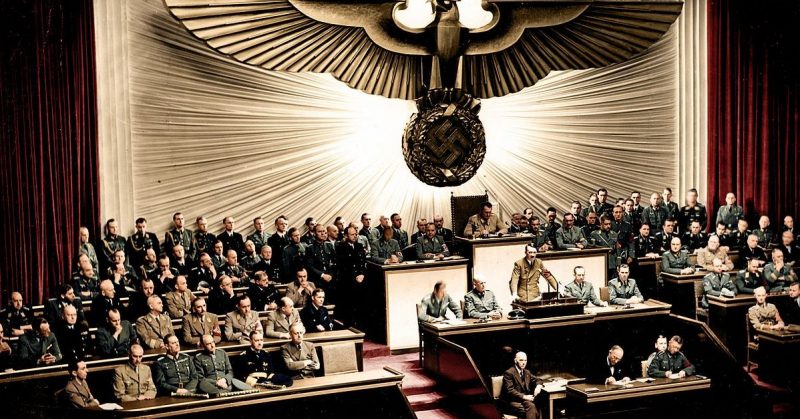For over two decades after the end of World War II, almost 100 members of the Nazi party held high-ranking positions in the West German Justice Ministry, reports a recently released government document.
90 of the 170 leading judges and lawyers in the West German Justice Ministry from 1949 to 1973 were former members of the Nazi Party.
34 of them were former Sturmabteilung (SA). The SA was the Nazi paramilitary group who assisted Hitler in his rise to power and were part of Kristallnacht, the violent night that killed 91 Jews.
Former Justice Minister Sabine Leutheusser-Schnarrenberger, who commissioned the study, commented on the “large continuity.”
In 1957, the ministry’s senior officials were 77% former Nazis. Christoph Safferling, the coauthor of the report, said that they hadn’t expected the figure to be so high.
The large proportion of former Nazis in the ministry helped them shield each other from post-war justice. They were also able to carry over some of the Nazi laws to the new country like discrimination against gays.
One lawyer with a top family-law position in the Justice Ministry was the same lawyer who wrote the Nazis laws that banned marriages between Jews and non-Jews.
“The Nazi-era lawyers went on to cover up old injustice rather than to uncover it and thereby created new injustice,” said Heiko Maas, Germany’s justice minister who presented the report.
Late last year, a report showed that 54% of the West German Interior Ministry staff members were former Nazis. Those staffers included those that had participated in forced sterilization programs, as well has high ranking officers of the SS and SA. Today, those officers would be classified as Nazi perpetrators, according to the report.
That report also discovered that 14% of the East German Interior Ministry workers were former Nazis. This number is especially surprising considering the effort the Communists spent purging Nazis from their government.
The reality of post-war Germany was that there was a critical need for experienced civil servants and lawyers in order to get the new governments up and running.
Being a former Nazi did not have the same stigma in 1949 as it does today. Dr. Bösch was the lead researcher on a project that led to the discovery of former Nazis in the West Germany Interior Ministry. “There was a belief that they were people who had done their duty in a difficult time.”
The Allied powers of the time were more concerned about the growing threat of the Soviet Union than about finding former Nazis and bringing them to justice.
In addition, judges of the time required a high burden of proof before convicting them which resulted in a small percentage of ex-Nazis being convicted for their war crimes, Business Insider reported.
Also, Germans were experiencing a sense of denial about the crimes of the Nazis. Many saw the Nuremberg trials from 1945 to 1949 as “victor’s justice.”
“When you look today at how the use of the concept of ‘national’ is developing among the public. I believe it clearly shows how urgently important it is to show the facts of what happens when people refer to race or bloodlines as special, distinguishing features, marginalizing other people,” added Sabine Leutheusser-Schnarrenberger.
